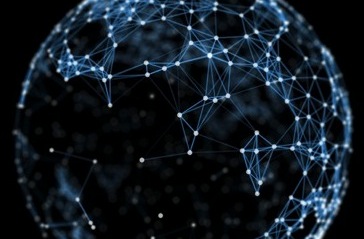or the 21st Century Scopes Trial
|
I taught a class at DeVry for several years that dealt with ethics and technology, which tied them together. For someone from a liberal arts and philosophy background, I really enjoyed Hans Moravec predictions about the future of robots. Moravec taught at Carnegie Mellon University and started the university's Robotics Institute.
Moravec understood that the robot would evolve as all biological beings have on earth have evolved over time:
Moravec's evolution of the robot What was interesting to me was that many of my technology students reacted to Moravec's robotic evolution in the same way many people reacted to Darwin's On the Origin of Species in 1859. It was difficult for some of my students to grasp something about which they thought they knew a great deal. The students understood how the robot and the computer evolved over time, but Moravec predicted that the robot will be thinking within a handful of decades, which is a huge step beyond being programed by humans. Beyond my class, many Americans have difficulty with Darwin. For many, either suggestion of evolution is beyond the pale. Moravec's prediction about robotic evolution looked into the future...to the mid-21st century. What intrigued me is that he did this in 1991. He divided the first fifty years of the 21st century into several stages of evolution of the robot: the dumb robot, learning robot, imagery, and reasoning. The Dumb Robot (ca. 2000-2010) Moravec predicted in 1991 that in the first decade of the 21st century we would have robots doing programmed work on assembly lines in factories and jobs within homes. These robots will be mental abilities of small reptiles. This picture is for a car assembly line. These robots are servant robots. Interestingly, Moravec was correct in his prediction made in the early 90s. These are just two examples of what we already have.
This is the iRobot Vacuum Cleaner for your home. Learning (2010-2020) Computers will develop into what Moravec calls the learning period. They will be able to be more flexible and able to adjust to a changing work environment. The robot will learn from previous errors or problems that it has experienced. He compares this learning of robots to what frogs are able to do. After several problems, both will learn not to repeat an activity. Imagery (2020-2030) When the computer has evolved to the imagery level, it will be able to simulate an activity and detect errors or problems. This process will be repeated and then the robot will evaluate the various procedures. Then the robot will select the best approach. This generation of robots will have evolved to be like monkeys. Reasoning (2030-2040) Reasoning robots will process data a million times as fast as they process information. These robots will become what Moravec calls "superhuman" and will think similar to humans at one level. However, they will take a quantum leap ahead of us at other levels. Moravec's predictions have moved into cognitive or thinking robots. While my students questioned freestanding thinking robots, some in the field of robotics believe that think Moravec's predictions will come sooner than his prediction. Either way, thinking robots will evolve in the lifetime of my children. I am 71, and if I live to 100, I will see this this naissance in the evolution of robots. The next question is what will be our relationship with these superhuman robots? Sci-fi movies and books have already posed these questions about superhuman robots at war with us. This is an early example in 1953.
This is the movie trailer of Robot Monster:
In fifty years, the movies evolved a great deal as did the robots. I, Robot came out in 2004.
This is the trailer for I, Robot:
Japan has worked on human-looking robots that have many uses including in hospitals or working with children with special needs children. This is also an interesting conversation with Jules. This is an excellent speech by David Hanson on TED. While we are in the early stages of the evolution of robots, we all need to get into the discussion with minds that are not closed to thinking. Unfortunately, when I was teaching the ethics and technology class, a recent Colbert Report had not aired. I have found over years of teaching that using various tools in the class room will often open minds of people due to seeing things from a different perspective. Stephen Colbert can often jar minds enough to see the light.
Visit the On Seeing the Light page to read more about this topic.
Visit the Connecting the Dots page to read more about this topic. 06/21/14 Follow @mountain_and_me |














